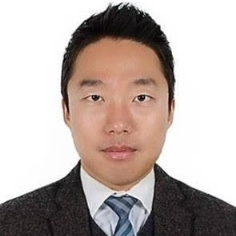Advanced Design for Manufacturing Processes (Second Volume)
A special issue of Materials (ISSN 1996-1944). This special issue belongs to the section "Manufacturing Processes and Systems".
Deadline for manuscript submissions: closed (20 June 2022) | Viewed by 8729
Special Issue Editors
Interests: advanced mechanical design and manufacturing processes; laser aided manufacturing; laser-aided manufacturing; laser cutting; laser welding; laser drilling; laser surface treatement; concrete composite materials; lithium-ion batteries; cell culture plate
Special Issues, Collections and Topics in MDPI journals
Interests: sustainable construction materials; sound-absorbable concrete; waste concrete powder; ultra-high performance concrete; high-strength concrete; durability; material design
Special Issues, Collections and Topics in MDPI journals
Special Issue Information
Dear Colleagues,
Manufacturing plays a significant role in the development of modern science and technology. More importantly, engineering products in the semiconductor, consumer electronics, mobile, and display fields and in the automotive, ship building, aviation, and building construction industries can be produced with the aid of advanced manufacturing technology. Advanced manufacturing industries increasingly integrate new innovative technologies in both products and processes. As advanced manufacturing processes are being adapted in a wide range of engineering fields, the design of manufacturing is becoming important. Since materials science and manufacturing include various engineering research areas, it is important to integrate a wide spectrum of knowledge in these research fields to accelerate government and industrial development. Therefore, this Special Issue on “Advanced Design for Manufacturing Processes (Second Volume)” will aim to provide an opportunity to integrate a wide spectrum of knowledge in the field of materials design and manufacturing processes.
This Special Issue of Materials focuses on all aspects of current scientific and technological progress related to the advanced design for manufacturing processes. Topics of interest include mechanical and material properties of materials for manufacturing design; advanced design of composite materials, such as concrete composites; advanced manufacturing processes, including laser-aided manufacturing, additive manufacturing, and nano- and micro-manufacturing; and materials design and manufacturing of lithium-ion batteries.
It is our pleasure to invite you to submit a manuscript for this Special Issue. Full papers, communications, and reviews that address advances in mechanical and materials design and manufacturing processes are welcome.
Prof. Dongkyoung Lee
Prof. Dr. Sukhoon Pyo
Guest Editors
Manuscript Submission Information
Manuscripts should be submitted online at www.mdpi.com by registering and logging in to this website. Once you are registered, click here to go to the submission form. Manuscripts can be submitted until the deadline. All submissions that pass pre-check are peer-reviewed. Accepted papers will be published continuously in the journal (as soon as accepted) and will be listed together on the special issue website. Research articles, review articles as well as short communications are invited. For planned papers, a title and short abstract (about 250 words) can be sent to the Editorial Office for assessment.
Submitted manuscripts should not have been published previously, nor be under consideration for publication elsewhere (except conference proceedings papers). All manuscripts are thoroughly refereed through a single-blind peer-review process. A guide for authors and other relevant information for submission of manuscripts is available on the Instructions for Authors page. Materials is an international peer-reviewed open access semimonthly journal published by MDPI.
Please visit the Instructions for Authors page before submitting a manuscript. The Article Processing Charge (APC) for publication in this open access journal is 2600 CHF (Swiss Francs). Submitted papers should be well formatted and use good English. Authors may use MDPI's English editing service prior to publication or during author revisions.
Keywords
- manufacturing processes
- advanced design and manufacturing
- mechanical properties
- material properties
- mechanical engineering
- materials science and engineering
- composite materials
- ultra-high-performance concrete
- laser-aided manufacturing
- laser material processing
- nano- and micromanufacturing
- concrete composites
- materials design and manufacturing of lithium-ion batteries
- 3D printing
- additive manufacturing
Benefits of Publishing in a Special Issue
- Ease of navigation: Grouping papers by topic helps scholars navigate broad scope journals more efficiently.
- Greater discoverability: Special Issues support the reach and impact of scientific research. Articles in Special Issues are more discoverable and cited more frequently.
- Expansion of research network: Special Issues facilitate connections among authors, fostering scientific collaborations.
- External promotion: Articles in Special Issues are often promoted through the journal's social media, increasing their visibility.
- Reprint: MDPI Books provides the opportunity to republish successful Special Issues in book format, both online and in print.
Further information on MDPI's Special Issue policies can be found here.







